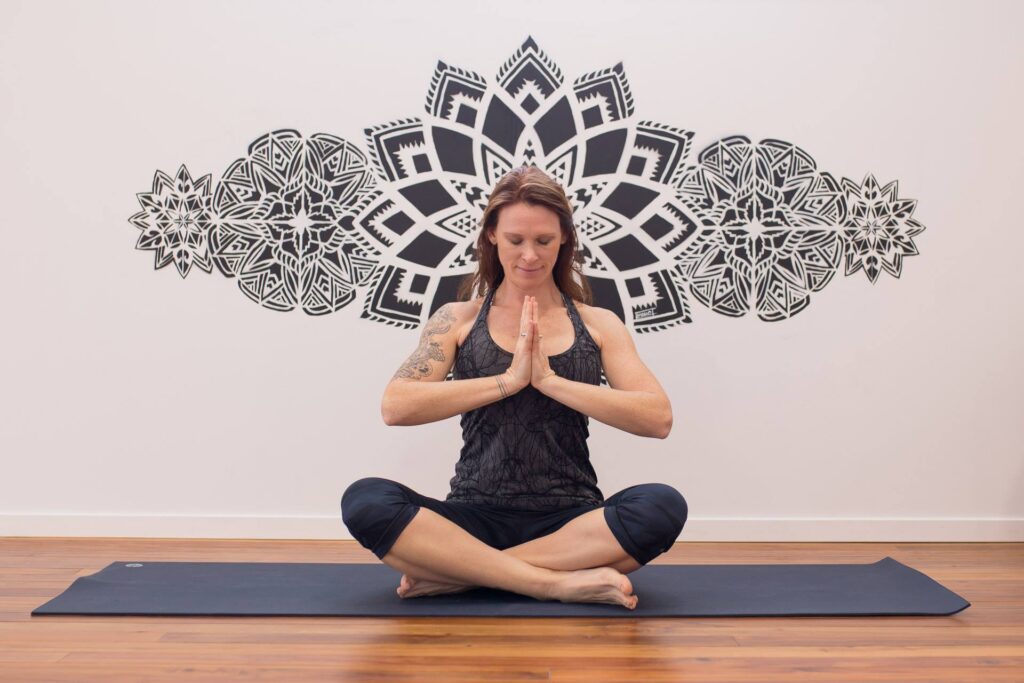In a world where mental health is becoming as important as physical fitness, many people turn to ancient practices for balance and inner peace. Two of the most popular methods are meditation and yoga. While both aim to improve mental wellness, they differ significantly in practice and benefits. This blog explores Meditation vs Yoga in-depth, revealing which may be more effective for mental wellness and why. With research from Harvard and the World Health Organization (WHO), we will help you decide which practice suits your needs best.
Understanding the Basics
What Is Meditation?
Meditation is a mental practice that involves training attention and awareness. Often practiced while seated, it aims to bring mental clarity and emotional calmness. It can be done through techniques like mindfulness, breathing exercises, or visualization.
What Is Yoga?
Yoga is a physical, mental, and spiritual discipline that originated in ancient India. It combines physical postures (asanas), breathing techniques (pranayama), and sometimes meditation. Unlike meditation, yoga involves movement and can improve both physical flexibility and mental focus.
Historical Origins
The Roots of Meditation
Meditation has been practiced for thousands of years, with roots in ancient Hindu, Buddhist, and Taoist traditions. It was primarily used for spiritual growth but has evolved into a mainstream mental health tool.
The Roots of Yoga
Yoga dates back over 5,000 years and originated in ancient India. It was traditionally a spiritual practice, but over time, especially in Western cultures, it has become more associated with fitness and mental wellness.

Comparing the Two Practices
Physical Engagement
- Yoga: Involves dynamic physical movement through postures and sequences.
- Meditation: A still practice that requires no movement.
Mental Focus
- Yoga: Combines body awareness with breath control to focus the mind.
- Meditation: Purely mental focus, often on breath, sounds, or thoughts.
Accessibility
- Yoga: Requires space and sometimes equipment like mats or blocks.
- Meditation: Can be done anywhere without equipment.
Time Commitment
- Yoga: A session typically lasts 30–60 minutes.
- Meditation: Sessions can be as short as 5–10 minutes and still be effective.
Benefits for Mental Wellness
How Meditation Enhances Mental Health
- Reduces Stress and Anxiety: According to a Harvard Medical School study, mindfulness meditation lowers cortisol levels—the hormone responsible for stress.
- Improves Focus and Concentration: Regular meditation strengthens areas in the brain associated with attention and memory.
- Boosts Emotional Regulation: It helps individuals respond calmly rather than react impulsively.
How Yoga Improves Mental Well-being
- Combines Mind and Body: Harvard research shows yoga can help reduce symptoms of depression and anxiety.
- Increases Body Awareness: Being present in the body reduces dissociation, a common symptom in mental health disorders.
- Improves Sleep and Relaxation: Yoga Nidra, a deep relaxation form of yoga, has shown to improve sleep quality significantly.
Scientific Research: What Does the Data Say?
WHO’s Perspective
The World Health Organization (WHO) recognizes both yoga and meditation as effective tools for promoting mental health. In its Comprehensive Mental Health Action Plan 2013–2030, WHO emphasizes the need for culturally appropriate and accessible mental wellness interventions, noting the potential of traditional practices like meditation and yoga in reducing the burden of mental disorders.
Harvard University Findings
A 2018 Harvard study published in the journal Psychiatry Research showed that individuals who practiced mindfulness meditation for 8 weeks had measurable changes in brain regions associated with memory, sense of self, empathy, and stress regulation.
A separate Harvard Health article discussed how yoga, particularly when combined with breathing exercises, significantly lowered stress, improved mood, and reduced symptoms of generalized anxiety disorder.
Case Study: Meditation vs Yoga in Real-Life Scenario
Case Study: Corporate Wellness Program
Background: A U.S.-based tech company introduced both yoga and meditation programs for its employees. Over a 6-month period, employees could choose either practice for weekly sessions.
Results:
- Yoga Group: Reported improved posture, reduced back pain, and a 25% drop in self-reported stress levels.
- Meditation Group: Experienced a 40% reduction in anxiety symptoms and better focus on tasks.
Conclusion: Both practices improved overall mental well-being, but meditation showed a greater impact on internal emotional regulation, while yoga helped more with physical tension and general stress.

Meditation vs Yoga: Which One Is Better?
For Stress Reduction
Winner: Meditation
While both practices reduce stress, meditation directly targets the mind and nervous system, making it slightly more effective for immediate emotional calmness.
For Physical and Mental Balance
Winner: Yoga
Yoga integrates the physical body with mental awareness, making it ideal for those who want both flexibility and emotional wellness.
For Busy Lifestyles
Winner: Meditation
Short, consistent meditation sessions are easier to fit into a busy schedule, especially for people who cannot spare 30+ minutes for yoga.
For Beginners
Winner: Depends on Personal Preference
If you prefer moving your body and stretching, yoga may feel more engaging. If you’re seeking inner peace and calmness, meditation could be your entry point.
Combining Meditation and Yoga: The Best of Both Worlds
Many wellness experts recommend combining the two for maximum benefits. A yoga session followed by a short meditation can amplify the mental relaxation effects and improve overall well-being.
You can:
- Start with 20 minutes of yoga.
- Follow up with 10 minutes of meditation.
This combination relaxes the body and quiets the mind, preparing you for a peaceful day or restful night.
Practical Tips to Get Started
Starting Meditation
- Find a Quiet Space: Choose a calm environment with minimal distractions.
- Use Guided Apps: Apps like Headspace or Calm offer beginner-friendly guidance.
- Be Consistent: Start with 5 minutes daily and gradually increase.
Starting Yoga
- Choose a Beginner Class: Look for Hatha or Yin Yoga to begin gently.
- Focus on Breath: The breath is central to yoga’s mental benefits.
- Use Props: Don’t hesitate to use blocks, straps, or cushions to support your practice.
Expert Opinions
“Meditation trains the mind to notice the present moment without judgment. It’s one of the most powerful tools for mental health.”
— Dr. Sara Lazar, Harvard Medical School
“Yoga isn’t just stretching; it’s a deep connection between movement and breath that rewires the nervous system.”
— Dr. Sat Bir Singh Khalsa, Assistant Professor at Harvard Medical School
Common Myths About Meditation and Yoga
Myth: You Have to Clear Your Mind to Meditate
Truth: Meditation is about observing your thoughts, not eliminating them. Even experienced meditators have wandering thoughts.
Myth: Yoga Is Only for Flexible People
Truth: Yoga is for every body. Flexibility increases with regular practice, and modifications exist for all levels.
Myth: One Is Better Than the Other
Truth: Both have unique benefits. It’s not about which is superior but which suits your lifestyle and mental wellness goals.
FAQs
Q1: Can I do yoga and meditation together?
Yes, combining both can enhance mental and physical well-being more effectively than doing either alone.
Q2: How long does it take to see results?
You may notice reduced stress within a week. Long-term mental wellness benefits usually emerge after consistent practice over 4–8 weeks.
Q3: Is one better for depression?
Meditation has shown strong results in reducing depressive symptoms by changing brain patterns. However, yoga is also effective, especially for mild depression.
Q4: What’s more suitable for children or teens?
Yoga is often more engaging for kids due to its movement, but mindfulness-based meditation is also increasingly being introduced in schools.
Q5: Do I need an instructor to start?
Not necessarily. Apps and online videos make it easy to begin both practices at home.
Conclusion
When comparing Meditation vs Yoga, there’s no absolute winner. Your choice should depend on your goals, lifestyle, and preferences. Meditation offers a direct path to calming the mind, reducing anxiety, and enhancing emotional clarity. Yoga, on the other hand, delivers both physical strength and mental tranquility through movement and breath control.
For optimal mental wellness, consider integrating both into your routine. Even 10–15 minutes a day can transform your mental health over time. Whether you choose to sit in stillness or move through poses, the most important step is to start.





